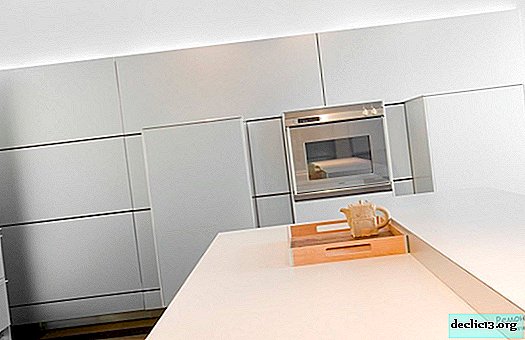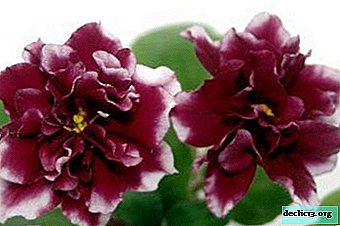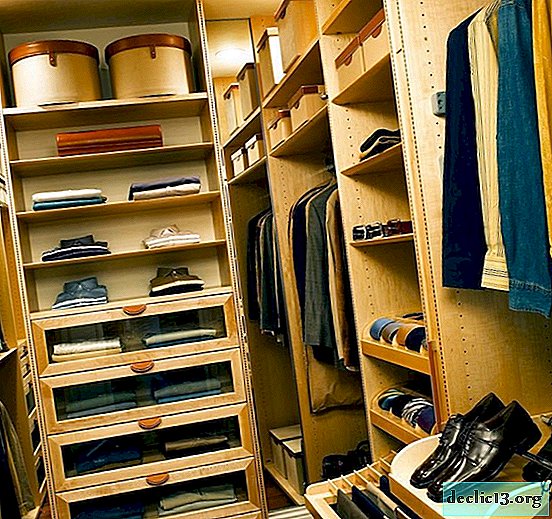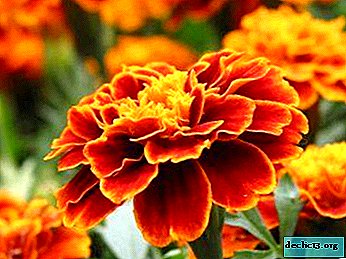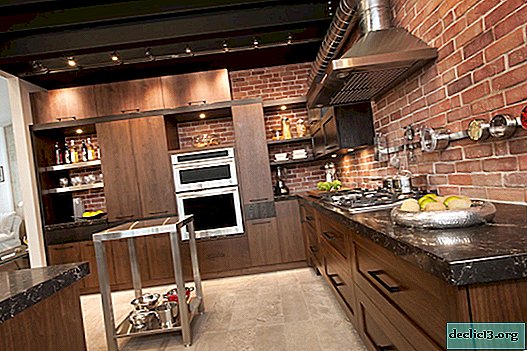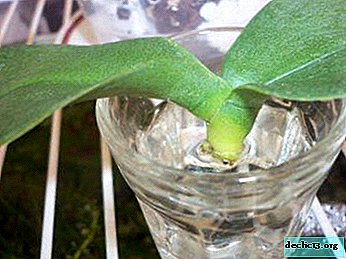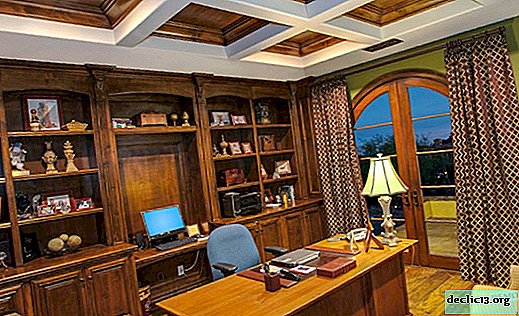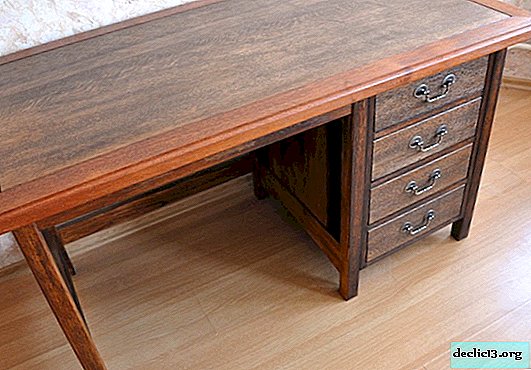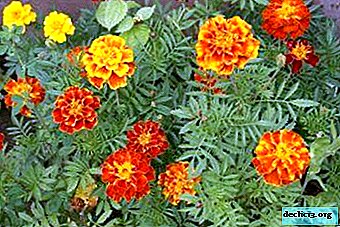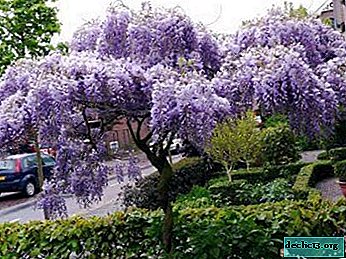"African Beauty" begonia: photo, detailed description, other flower names and rules of care
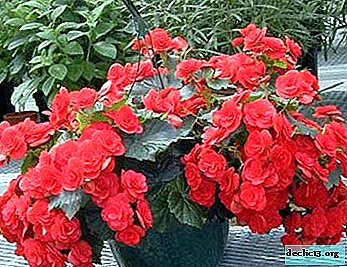 If you have ever seen begonia, you probably remembered it by the unusual shape of leaves similar to asymmetric hearts. This southern plant won the hearts of flower growers with a variety of colors and shapes of not only flowers, but also colorful leaves. This beautiful flower was loved by all experienced and novice gardeners for its beauty, variety of shapes and unique beneficial properties.
If you have ever seen begonia, you probably remembered it by the unusual shape of leaves similar to asymmetric hearts. This southern plant won the hearts of flower growers with a variety of colors and shapes of not only flowers, but also colorful leaves. This beautiful flower was loved by all experienced and novice gardeners for its beauty, variety of shapes and unique beneficial properties.
It is grown in gardens and at home on window sills. You will learn about what kind of plant this is, about the proper cultivation and care of it later in the article. Also watch a helpful video on the topic.
Origin
Begonia got its name from the French monk Charles Plumier, famous botanist of the XVII century. In 1687, he accompanied an expedition organized by his friend, the Governor of Haiti, Michel Begon. As a result of the search, six new species of herbaceous plants were discovered with leaves of an unusual asymmetric shape resembling elephant ears.
In honor of the organizer of the expedition, Michel Begon, the found plants were named. Now you know what the name of this flower means. Despite the fact that the first species of begonias were found on the islands of the Caribbean, there are two more distribution centers of the genus Begonia: Central Africa and Southeast Asia.
ATTENTION: There is a hypothesis that the initial homeland of begonia was West Africa, from where the plant spread to the Brazilian region (near the Amazon basin) and Southeast Asia (Indochina, Malaysia, Indonesia).Other names, price
 At home in Africa begonia is often called elephant ears for the characteristic asymmetric shape of the leaves. The bright pink underside of the leaves shines through in the light, like a pink auricle, enhancing the similarity.
At home in Africa begonia is often called elephant ears for the characteristic asymmetric shape of the leaves. The bright pink underside of the leaves shines through in the light, like a pink auricle, enhancing the similarity.
The high royal Rex begonias with large variegated leaves are called Angel Wings. Indeed, such a romantic name is justified when looking at the jagged, as if feathered edges of leaves that look like irregularly shaped hearts.
The most common abundantly blooming begonias of Elatior are usually given as a winter bouquet. They are always present on the shelves of flower shops and are relatively inexpensive from 300-400 rubles.
Detailed description
Begonia flowers are unisexual and on one plant there are both male and female flowers (we spoke in detail about the differences between female and male begonia flowers here). First, male begonia flowers are revealed, they are simple stamen and double.
Terry flowers can reach such an extent that the stamens are transformed into a kind of petal and the flower is sterile. Then female flowers bloom, they are always simple and smaller.
Often such flowers are removed so that seed bolls do not form. With the formation of begonia fruits, all the energy is devoted to their ripening and is quickly depleted, stopping flowering (we talked about how to care for begonia after flowering here).
Velvet begonia flowers mainly in warm colors.:
- creamy white;
- beige;
- yellow;
- orange
- scarlet.
Begonias are found in different sizes. Their flowers can be very small or huge.
- Giant (gigantea) with flowers up to 20 cm in diameter.
- Large flowered (grandiflora) flowers 10-14 cm.
- Plentifully flowering (floribunda) 8-10 cm.
- Multi-flowered (multiflora) 5-7 cm.
Begonia leaves are usually asymmetrical in shape, resembling elephant ears or a heart with unequal halves:
- with rounded edges;
- jagged edges;
- terry-fringed edges.
There are species with lotus, maple, star-shaped carved sheet plates lying in the same plane or twisted into a double spiral. The color of the leaves is no less diverse than the color of the flowers.
Solid Colored:
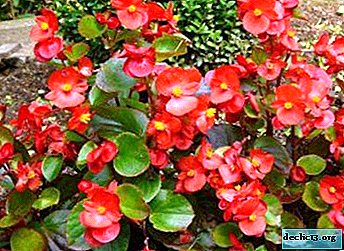 light green with a translucent bright pink inside;
light green with a translucent bright pink inside;- deep green;
- dark olive;
- almost black velvety.
There are views with a contrasting purple border around the perimeter of the sheet or a light stripe passing in the middle of the sheet plate. In variegated species of begonias, a combination of up to 4-5 flowers on one sheet is found:
- silver white;
- green;
- pink;
- purple;
- brown.
On leaf plates, a pattern is often found in the form of a white or lemon mesh of veins. In spotted species of begonias, leaves are decorated with specks of spray silver, pink, purple.
According to the structure of the stem, the genus of begonias is distinguished into groups:
- Reed with high straight knotty shoots.
- Bush (shtrabi) form low branched shrubs, strewn with flowers.
- Caudex (tuberose), in the lower part of the stem of which a characteristic thickening is formed. These species are able to accumulate water in the fleshy stem and branches.
- Ampel-climbing species with flexible creeping stems.
Begonia roots also vary in shape, depending on the type of flower.
They may be:
- Tuberouswhen fragile translucent shoots grow directly from the tuber.
- Rhizomecreeping on the ground.
- Fuzzy, in begonias with a superficial root system.
Here we talked about annual and perennial begonias, as well as about the features of their cultivation.
Photo
Then you can visually familiarize yourself with beautifully blooming indoor flowers in the photo.





The main types
IMPORTANT: The official classification of begonia species is so complicated and confusing that amateur gardeners use among themselves several simplified divisions by the type of stems and roots, and by the method of cultivation.For example, Professor V. Vorontsov, Doctor of Agricultural Sciences subdivides all types of begonias into:
- Tuberous.
- Shrubbery.
- Flowering.
- Decorative foliage.
The European classification system divides begonia species by biological characteristics and breeding method:
- Kane begonias, reed.
- Shrubs, bush.
- Royal Rex.
- Rhizome, rhizome.
- Tuberous.
- Tuberoses.
- Ampel-climbing.
- Everlasting.
Beneficial features
Begonias well clean the surrounding air of dust and synthetic fumes, significantly reduce the content of microbes and bacteria in the air, and improve the state of the cardiovascular and circulatory system. There is an opinion that begonia has positive energy and helps to cope with depression and insecurity.
Breeding
Begonia propagated by seeds, cuttings, leaves, division of a bush or tubers:
 After flowering, female begonia flowers form the fruit - it is a trihedral box with small seeds. They are so small that for the convenience of planting in the flower industry they are covered with a special layer, pane. This layer dissolves quickly under the influence of warm water and does not interfere with germination.
After flowering, female begonia flowers form the fruit - it is a trihedral box with small seeds. They are so small that for the convenience of planting in the flower industry they are covered with a special layer, pane. This layer dissolves quickly under the influence of warm water and does not interfere with germination.Begonia seeds are germinated at a temperature of 23-25 ° C from January-February, so that the sprouts have time to grow stronger before planting. A 1 cm thick drainage layer is poured into a plastic container, loose soil, which is sprayed from the spray gun for the required humidity.
Seeds are slightly pressed into the soil, not sprinkled with earth and covered with a transparent film or glass. The first shoots appear after 8-10 days, they require additional lighting with phyto-lamps. After the appearance of the first leaves, the sprouts dive and transplanted into ditches. After 2 months, begonia is ready for transplanting into separate pots, and from June to planting in the garden.
- The most convenient way to propagate begonias is by cuttings. For this, the upper or middle part of the twig with 2-3 leaves and a length of about 10 cm is necessary. Having cut the stalk with a sharp knife, it is either put into water until the roots appear, or immediately planted in the ground for rooting.
To germinate the stem in water, it is placed in a transparent container and after the appearance of roots 1.5-2 cm long, transplanted into a pot. If the stalk is placed immediately in the ground, it is necessary to treat the cut with a growth stimulator, deepen the stalk to the level of the lower leaf and cover with a transparent jar on top. After the appearance of new leaves, the shelter is removed. Read more about how to root begonia, we talked about in this material.
- When propagating begonias by leaves, leaves with petioles, whole leaf plates and leaf fragments are used. Leaves with petioles are germinated in water until roots of 2 cm appear and transplanted into the ground.
If you just take a begonia leaf, from the seamy side on the veins make cuts at a distance of 2-3 cm and lay on wet soil, pressing it with glass or a transparent film. You can also use for propagation triangular fragments of a leaf plate, deepening them into moist soil with a sharp tip. Top is also covered with glass until the first new leaves appear.
- When dividing begonias with rhizomes, it is enough to divide the root with a sharp knife, treat the slices with coal or ash and plant them in loose and moist soil.
- Begonia tubers are divided in spring and only those whose buds have not yet hatched. With a sharp knife, the tuber is divided into parts, leaving 2-3 kidneys on each, and the slices are processed. The resulting segments are buried in the ground, leaving growth buds on the surface and covered with a film until sprouts with the first leaves appear.
Care, lighting, temperature, soil
Begonia comes from tropical rainforests, where partial shade and diffused light predominate.
Conditions close to its natural climate:
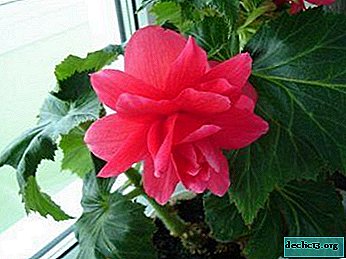 What loves a flower more: sun or shadow? In fact begonia is a photophilous plant, but does not tolerate direct sunlight. Feels good at the western, southeastern and eastern windows. For year-round flowering begonias, artificially extend daylight hours with fluorescent lamps.
What loves a flower more: sun or shadow? In fact begonia is a photophilous plant, but does not tolerate direct sunlight. Feels good at the western, southeastern and eastern windows. For year-round flowering begonias, artificially extend daylight hours with fluorescent lamps.- Indoor begonia prefers a moderate temperature of 23-25 ° C during the period of growth and flowering. In winter, the temperature is reduced to 15-16 ° C giving the plant a rest of 1.5-2 months (how to care for room begonia in winter?). This southern flower does not tolerate temperature differences and drafts, so placing on an open-type balcony is strictly prohibited. The temperature of the earthen coma should not differ greatly from the temperature of the leaves, otherwise the roots will rot and the plant will die.
- Begonia is moisture-loving and needs to be humidified.. If you do not have an air humidifier, you can increase the humidity with expanded clay by pouring it around the begonia pot and watering it periodically. In no case do not spray begonia leaves, so you can provoke the appearance of spots of brown rot on them (how to water begonia at home?). Also, do not leave water in the pan so that the roots of the plant do not rot.
- Soils with a slightly acid reaction and good drainage begonias are most suitable. When forming the soil mixture with the optimal composition, take 40% of leaf compost, 20% sand, 20% peat and 20% humus.
- During abundant flowering, the soil in which begonia grows is greatly depleted and the plant needs mineral fertilizing 1 time in 3-4 weeks. It is advisable to add potassium and phosphorus fertilizers with a low nitrogen content. Otherwise, lush foliage will not allow a large number of flowers to bloom.
- In early October, begonia has a rest period of 8-10 weeks. At this time, fallen leaves are removed from bush species and watering is stopped. Tuberous species growing in the garden require drastic measures. The shoots are cut off from them, leaving segments at a distance of 3 cm from the tuber.
The tuber itself is dug up, dried for about two weeks and placed in a wooden box, sprinkled with sand until the beginning of spring. Begonia tubers are stored in a dark room at a temperature of 5-6 ° C.
Begonia does not tolerate crowding, when planting, try so that the plants do not touch each other with leaves.
TIP: Plant the begonia in wide and low pots, so the roots will not be excessively flooded, and the earthen lump will always warm up evenly.Read about the rules for choosing the capacity and soil for growing begonia at home here, and in this article we talked about the intricacies of caring for plants in a pot.
Watch a video about grooming indoor begonias:
Features of growing in the house and on the street
 For the most part begonia is an indoor plant and only tuber species are planted in open ground to decorate the garden and flower beds. At home, this is a fairly unpretentious plant that prefers the diffused light of western and eastern windows, a moderate temperature of 23-25 ° C and an increased air humidity of 60%. About how to grow indoor begonia in a pot on the windowsill, we wrote in detail here.
For the most part begonia is an indoor plant and only tuber species are planted in open ground to decorate the garden and flower beds. At home, this is a fairly unpretentious plant that prefers the diffused light of western and eastern windows, a moderate temperature of 23-25 ° C and an increased air humidity of 60%. About how to grow indoor begonia in a pot on the windowsill, we wrote in detail here.
Decorative-leafy species are fed with nitrogen fertilizers once a month, begonias with lush large flowers - potash-phosphorus (we told here how to feed begonia for abundant flowering at home). Tuber begonias need an annual spring transplant in a new pot after a period of winter dormancy.
Other decorative species with fibrous or branched roots are transplanted only when the pot becomes cramped and the roots begin to emerge from it. About the rules of planting and replacing begonias at home, including after the purchase, we talked about in this article.
- When transplanting the soil is pre-disinfectedby calcining it at high temperature or spilling it with a weak solution of an insecticide.
- A plant prepared for transplant is shed with water, take out together with an earthen lump from the pot and carefully inspect the roots.
- Damaged or rotten roots are removed with a sharp knife., the sections are treated with ash or crushed activated carbon.
- A drainage layer is poured at the bottom of the potconsisting of expanded clay, fine gravel and coarse sand.
- Approximately 3 cm thick soil is poured on top.Place the plant and add the remaining land. If you want to decorate your garden with begonias, give preference to tuberous species.
- For planting bulbs, plants in open ground take strong seedlingsgrown indoors and hardened for a week on an insulated loggia at night temperature of 13-15 ° С. For begonia, slightly acidic loose soil is preferred; add leaf compost, humus and peat to the soil.
- Drainage is poured into the bottom of wells prepared for seedlings. in the form of expanded clay or fine gravel, sprinkled with 3 cm of soil. Put the seedling in the hole and fill up the remaining soil, slightly crushing it from above.
- After which the plant is watered with a small amount of water. Subsequently, the watering regimen is maintained: 1 time in 3 days, not forgetting to loosen the earth around the plant each time.
Importance should be given to the fact that it is necessary to wait until all the leaves have fallen, and the shoots will not turn yellow and dry. At this time, the tubers accumulate nutrients and form flower buds. Then, with a fork, carefully remove the tubers from the ground, dry in a cool room for about 2 weeks and store them in a wooden box with sand, and the processes are cut and planted.
You can find more information about growing begonias in the open field in our article.
Diseases and Pests
- The main pests of tuberous begonias are gall nematodesaffecting tubers and the root system of the plant. In this case, the plant is watered with a heterophos solution.
- Spider mite and aphid. To prevent, it is enough to remove fallen leaves and wilted flowers. To treat the leaves with soapy water, in advanced cases, phytoerm or deciss.
- Soft thyroid gland. Begonia is treated with infusion of garlic or feverfew.
- Bacterial spotting. The plant is treated with copper chloride every two weeks.
- Powdery mildew. Isolate a diseased plant and treat with fungicide.
- Gray rot. Processing Bordeaux mixture or foundationazole.
In more detail about the diseases and pests of begonia, as well as about ways to combat them, we wrote in a separate material.
Begonias are quite unpretentious plants that will decorate your house with beautiful large flowers, not only in the spring and summer, but even in winter and late autumn. The variety of colors of decorative and deciduous species is simply amazing!

 light green with a translucent bright pink inside;
light green with a translucent bright pink inside; After flowering, female begonia flowers form the fruit - it is a trihedral box with small seeds. They are so small that for the convenience of planting in the flower industry they are covered with a special layer, pane. This layer dissolves quickly under the influence of warm water and does not interfere with germination.
After flowering, female begonia flowers form the fruit - it is a trihedral box with small seeds. They are so small that for the convenience of planting in the flower industry they are covered with a special layer, pane. This layer dissolves quickly under the influence of warm water and does not interfere with germination. What loves a flower more: sun or shadow? In fact begonia is a photophilous plant, but does not tolerate direct sunlight. Feels good at the western, southeastern and eastern windows. For year-round flowering begonias, artificially extend daylight hours with fluorescent lamps.
What loves a flower more: sun or shadow? In fact begonia is a photophilous plant, but does not tolerate direct sunlight. Feels good at the western, southeastern and eastern windows. For year-round flowering begonias, artificially extend daylight hours with fluorescent lamps.